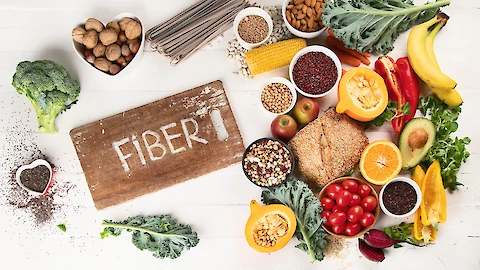
As our loved ones age, their nutritional needs change, particularly with regard to dietary fiber. Recognized as a key component of a healthy diet, fiber brings numerous benefits to seniors, from aiding digestion to preventing chronic diseases. A fiber-rich diet can significantly improve a senior's health and quality of life. However, incorporating fiber into a senior's diet can be challenging, especially for caregivers who may not know how to adapt meals for those needs.
The Importance of Fiber in Senior Diets
Fiber is a type of carbohydrate that is largely undigested as it passes through our systems. While this may not sound appealing, it plays a crucial role in maintaining optimal body function. For seniors, fiber is particularly important. As we age, our digestive system begins to slow down. A diet rich in fiber can help to maintain regular bowel movements and prevent constipation, a common issue among the elderly. Moreover, studies have shown that a high-fiber diet can lower the risk of developing chronic diseases such as diabetes, heart conditions, and even certain types of cancer.
The Current State of Fiber Intake in Seniors
Despite the numerous benefits, many seniors do not consume enough fiber. There are several reasons for this. Some seniors may have difficulty chewing certain high-fiber foods, such as raw fruits and vegetables. Others may not know which foods are high in fiber or lack the desire or ability to prepare these foods. According to the American Dietetic Association, the recommended daily fiber intake is between 25 and 38 grams, depending on age and gender. Unfortunately, most seniors fall far short of these recommendations.
How to Increase Fiber Intake in Senior Diets
If you need to increase fiber intake in your diet or that of a senior loved one, it starts with knowing which foods are high in fiber. Fruits, vegetables, whole grains, beans, nuts, and seeds all contain significant amounts of fiber. Replacing white bread with whole grain versions, adding beans to salads, and incorporating lots of fruits and vegetables into meals are just a few ways to increase fiber intake.
However, introducing high-fiber foods into a senior's diet must be done cautiously. In some cases, too much fiber can lead to abdominal discomfort and gas, especially if the increase is sudden or the senior is not used to a high-fiber diet. Gradually increasing fiber intake and ensuring the senior is also drinking plenty of fluids can help counteract these symptoms.
For those who have difficulty chewing, there are still many fiber-rich options available. Blended soups, stewed fruits, and cooked vegetables can be easier to consume but still provide a significant amount of fiber.
Furthermore, before you make any major dietary changes, make sure you consult with your loved one's care provider. Some seniors may have specific needs that they must take into account.
The Role of Senior Helpers Southeastern Indiana
At Senior Helpers Southeastern Indiana, we want to ensure that seniors in our care are getting the best possible nutrition. Our caregivers have been trained to understand the dietary needs of seniors and can provide meal planning and preparation services that cater to these requirements. Whether it's crafting flavorful, fiber-rich meals or adapting existing recipes to make them more palatable and healthy, we've got it covered.
If you live in New Albany, Madison, North Vernon, Jeffersonville, or Charlestown and seek assistance in caring for a senior loved one, reach out to us at Senior Helpers Southeastern Indiana. Let us help improve the quality of life for your loved ones with a balanced diet and compassionate care.